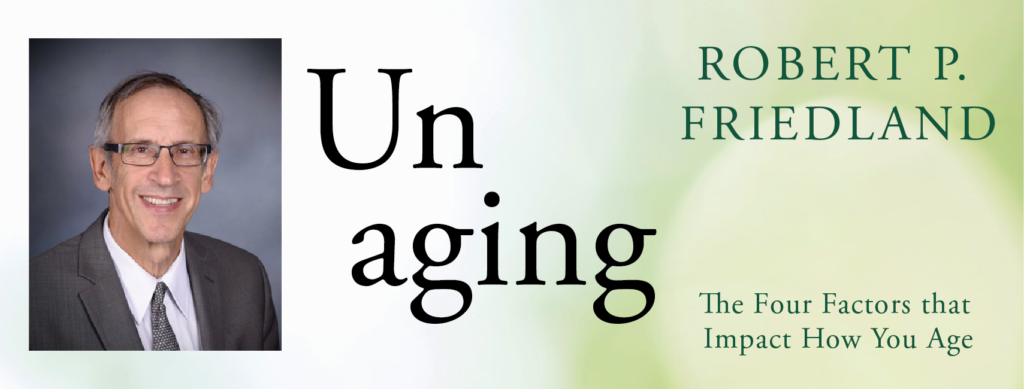
THE NEW JAMES BOND…OR PATRICK AT THE METROPOLITAN OPERA



Matt Singer presents a detailed history of the various iterations of the movie review TV show where Roger Ebert and Gene Siskel debated film quality. The show started out on a Public Broadcasting Station in Chicago and later morphed into a national syndicated weekly program.
Matt Singer documents the hostility Siskel and Ebert had for each other over many years of working together. Both men were competitors: Ebert reviewed movies for the Chicago Sun-Times (winning a Pulitzer Prize in 1975) while Siskel was the film critic at the Chicago Tribune.
From the start, the Siskel and Ebert relationship was antagonistic. But, over time, the relationship mellowed. Of course, the money factor impacted Siskel and Ebert. Starting at earning a few hundred dollars per week at the local PBS station, the Siskel and Ebert show grew in popularity and secured multimillion-dollar contracts for a national syndicated series.
Sadly, the Siskel and Ebert partnership ended in 1999 when Gene Siskel died of brain cancer. Ebert died in 2013 after a long battle with salivary gland cancer, thyroid cancer, and cancer of the jawbone.
Despite their differences, both Siskel and Ebert loved movies and their movie review show–with its famous “Two Thumbs Up!”–helped to promote cinema and changed film criticism. Were you a fan of Siskel and Ebert? GRADE: A
TABLE OF CONTENTS:
Introduction: Coming attractions — 1
Ebert before Siskel — 15
Siskel before Ebert — 35
Opening soon at a theater near you — 57
The first-take show — 79
Rompin’ stompin’ film criticism — 103
Two thumbs up — 127
Across the aisle — 147
Hooray for Hollywood –165
Get to the crosstalk — 185
The future of the movies — 201
The balcony is closed — 217
Ebert & Roeper & Lyons & Mankiewicz & Phillips & Scott & Lemire & Vishnevetsky — 233
Epilogue: Until next time, we’ll see you at the movies — 261
Appendix: Buried treasures that Siskel and Ebert loved — 277
ACKNOWLEDGEMENTS — 297
NOTES — 301
PHOTO CREDITS — 331
INDEX — 333

This week started out with the Buffalo Bills 3-point favorites over the Miami Dolphins in a game for the AFC Division Championship. Now, Vegas has adjusted the point spread to make the Bills 2 1/2 point favorites. The Miami Dolphins have clinched a Playoff berth, but they would certainly want the home field Playoff game that comes with an AFC Division Championship. The Bills, on the other hand, don’t have a Playoff berth. Their best path to the Playoffs is to win this game and become AFC East Champs. Is your favorite NFL team in a Playoff race?

Robert P. Friedland’s Unaging: The Four Factors that Impact How You Age summarizes the latest research on aging and points out how a few life-style changes can have a big effect on our health as we get older.
“I can’t say enough about the importance of fiber in the diet. Eating fiber is critical to human health–and preventing Alzheimer’s disease and dementia– yet few American eat enough brown rice, beans nuts, berries and other sources of fiber. You body needs fiber because of the short-chain fatty acids (SCFAs) made in gut bacteria. These SCFAs are small molecules that influence energy use in the body.” (p. 139-140)
Friedland also supplies some unnerving statistics: about 30-40 percent of people have Alzheimer’s-related dementia at 90 years of age. Women have a higher risk of Alzheimer’s for reasons that are unclear. The average dementia-free 70-year-old man has about a 27% chance of developing dementia during his life-time.
Alzheimer’s and dementia research continues to explore the causes and possible treatments for this condition but research studies have shown that exercise, mental activity, and a high-fiber diet can help delay or prevent these conditions.
I found Robert P. Friedland’s book clearly written with plenty of examples to illustrate the research findings. If you want to improve your quality of Life as you grow older, Unaging provides a workable, practical roadmap for doing so. GRADE: A
TABLE OF CONTENTS:

Can you go home again? Warren Murphy attempts it in The New Destroyer: Guardian Angel with the help of James Mullaney. The New Destroyer: Guardian Angel was published by TOR Books in 2007 as a reboot of the almost 40-year-old paperback series that first appeared in 1972.
Remo Williams returns with his Korean mentor Chiun, the Master of Sinanju, to help Dr. Harold W. Smith of the super-secret agency CURE counter the threat at the Southern Border.
General Santa Anna motivates thousands of illegal aliens to rearrange the border of the United States and Mexico. Only Remo Williams can stop the them, but first he has to face the only woman that ever killed him!
Fantastic Fiction online shows 155 volumes in the Destroyer series (including “The New Destroyer.” You can check that out here.
In the early 1970s, The Destroyer paperbacks were a publishing phenomenon. Warren Murphy and his then writing partner, Richard Sapir, created a unique Government operative in Remo Williams whose adventures sold millions of copies. The New Destroyer: Guardian Angel includes the familiar action/adventure plot, but with a new focus on actual threats to the U.S. The New Destroyer: Guardian Angel is #147 of the 155 books in the series. Are you a fan of The Destroyer series? GRADE: B

I would quibble with the title 25 Best Hits of the 1960s. Yes, there are some good songs in this compilation, but no way are they the Best Hits of the 1960s. I do love Clarence Carter’s “Slip Away,” Maurice Williams & The Zodiacs’s “Stay,” and The Drifters’s “Under the Boardwalk.” “Cathy’s Clown” might be my favorite song by The Everly Brothers. And “When A Man Loves A Woman” by Percy Sledge is a classic.
But, I’ve never been a fan of Gary Lewis and The Playboys. The same goes for The Classics IV and “Stormy.” And Lou Christie’s “Lightning Strikes.”
It’s been decades since I heard the instrumental “Telstar” by Tornadoes 74.
Do you remember these songs? Any favorites here? GRADE: B
TRACK LIST:
| 1-1 | Maurice Williams & The Zodiacs– | Stay | 1:40 |
| 1-2 | Bobby Vee– | Take Good Care Of My Baby | 3:19 |
| 1-3 | The Tokens– | The Lion Sleeps Tonight | 2:42 |
| 1-4 | B.J. Thomas– | I’m So Lonesome I Could Cry | 3:09 |
| 1-5 | Tornadoes 74– | Telstar | 3:14 |
| 1-6 | The Brooklyn Bridge– | Worst That Could Happen | 3:08 |
| 1-7 | Percy Sledge– | When A Man Loves A Woman | 2:52 |
| 1-8 | The Association (2)– | Never My Love | 3:26 |
| 1-9 | Hank Ballard– | Finger Poppin’ Time | 1:48 |
| 1-10 | The Beau Brummels– | Laugh Laugh | 2:53 |
| 1-11 | Clarence Carter– | Slip Away | 2:31 |
| 1-12 | Lou Christie– | Lightning Strikes | 2:51 |
| 1-13 | The Classics IV– | Stormy | 2:51 |
| 2-1 | The Crystals– | Da Doo Ron Ron | 2:06 |
| 2-2 | Joey Dee & The Starliters– | Peppermint Twist | 1:55 |
| 2-3 | The Drifters– | Under The Boardwalk | 2:36 |
| 2-4 | Everly Brothers– | Cathy’s Clown | 2:37 |
| 2-5 | Wayne Fontana– | Game Of Love | 2:15 |
| 2-6 | Gerry & The Pacemakers– | Ferry ‘Cross The Mersey | 2:23 |
| 2-7 | Wilbert Harrison– | Kansas City | 2:21 |
| 2-8 | Ben E. King– | Stand By Me | 3:14 |
| 2-9 | Gary Lewis & The Playboys– | Sure Gonna Miss Her | 2:05 |
| 2-10 | The Marvelettes– | Don’t Mess With Bill | 3:43 |
| 2-11 | The Miracles– | Shop Around | 2:52 |
| 2-12 | Mungo Jerry– | The Summertime | 3:38 |

Jeff and Jackie Meyerson sent Diane and me The Christmas Mitzvah, a book inspired by a true story. Al Rosen, a Jewish man, takes on the jobs of his Christian neighbors on Christmas Eve and day so they can spend the holiday with their families, starting a tradition that lasts for decades.
A mitzvah, as Al explains, is a good deed, especially apt on a holiday. Jeff Gottesfeld’s story concerns kindness and differences bringing people together. Michelle Laurenlia Agatha’s lovely illustrations capture the essence of the story and the people who are helped by Al Rosen’s caring acts over the years. This book was selected as a Best Jewish Children’s Book of 2021 byTablet Magazine and is a Sydney Taylor honor award!
Thank you, Jeff and Jackie, for a book that will be part of our Holliday Traditions in the years ahead! GRADE: A

Jerry House alerted me that this blog ranked #24 out of 400 mystery blogs (check it out here ). All the credit for this high ranking belongs to you. It’s the wit and wisdom of Patti, Jeff, Deb, Richard, Beth, Todd, Art, Willam, Maggie, Bob, Tracy, Carl, Lauren, Steve, Jerry, Wolf, Stan, Dan, Neeru, Michael, Byron, Elgin, Angela, Scott, Jim, John, Kevin, Randy, James, Kent, Fred, and Matthew as well as all of you who make this blog a part of your day that made this blog #24.
The year ahead with the Presidential Election Season, multiple wars, Dark Money warping our voting, Social Media spreading lies and confusion, and divisions in our country needs some rationality and sanity. You bring it to this blog. Together, we can get through this nightmare.
Thank you, thank you very much.



When this week began, the Bills were 8 1/2 point favorites over the NEW New England Patriots. As the week went on, Vegas kept increasing the point spread for this game. Now, at kick-off time, the Bills are now favored by 14 points over the Patriots! The Bills need a win badly to clinch their Playoff spot. How will your favorite NFL perform today?